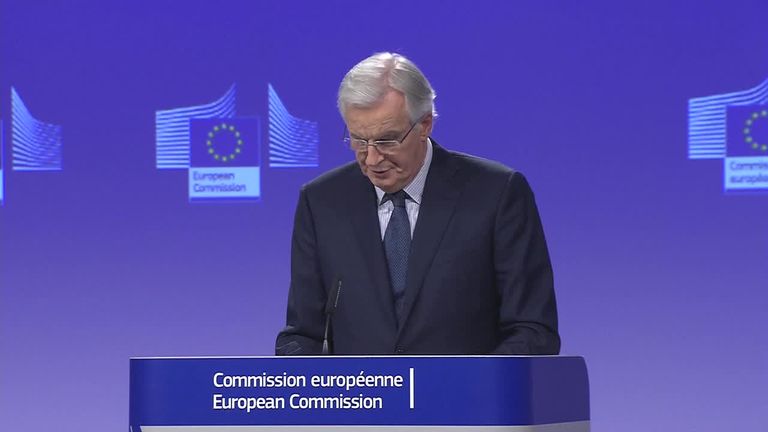PM's Brexit fudge recipe might yet leave bad taste
Theresa May is celebrating a deal but the really difficult negotiations - with both her MPs and the EU - are still to come.
Wednesday 13 December 2017 14:45, UK
The Prime Minister will be delighted to have negotiated the Brexit process聽to this point of "sufficient progress" on initial divorce matters.
But the progress, as well as being delayed by a couple of months, is not as far as she would have wanted.
Immediate discussions will begin on a transition period, before talks about trade, which will still take some time to prepare internally by the 27 other EU member states.
On Northern Ireland, the important point is Mrs May and her diplomats managed, in the early hours of Friday, to square off both Dublin and Belfast on the thorny issue of the Irish border.
The change in words within Friday's agreed text were more about providing clarity rather than a fundamental change in the meaning of what had already been agreed on Monday.
Instead of "full regulatory alignment", the new wording is "full alignment with the rules" of the EU's single market and customs union, which underpin the Good Friday Agreement and an open border.
The recipe of the fudge has changed only a little, but sufficiently enough for the DUP to claim to have won "six substantive changes" to the wording.
The key point is the position on Monday had left until the second phase of Brexit negotiations the precise degree of "alignment" required to prevent a hard border on the island of Ireland.
Dublin and Brussels believes this will be widespread, touching upon dozens of areas, but Belfast thinks it is just two or three.
Over the past week the UK was quite literally negotiating with itself amid talks in Whitehall between the UK Government and Northern Ireland's DUP.
The other substantive point of compromise in Friday's agreement is the length of a referral period for the European Court of Justice to enforce the rights of EU citizens.
Both sides have compromised here. The EU asked for 15 years' of jurisdiction, the UK for five years.
They have opted for eight years.
It seems this is acceptable for Tory Brexiteers, but that is not what they were saying only a few months ago.
This speaks to a wider truth.
The real story of Brexit's first phase is how the Prime Minister has managed to get her own MPs to wear a series of compromises: on transition, sequencing, financial settlement, rights and potentially Ireland, too.
Brexiteer MPs have shown that when push comes to shove, any Brexit is better than the risk of a Government collapse meaning no Brexit.
Effectively, phase two negotiations are now for agreeing a transition period while phase three is for trade talks.
A transition period will see Britain remain in the customs union and single market for two years.
European Council President Donald Tusk revealed the UK has asked for this, but also warned it will mean Britain is obliged to accept new EU laws during the period.
In practice, this will not change a great deal over the two years, but had previously been ruled out by Brexiteers.
We are still some months from talking about trade, and years from actual trade talks.
The really difficult stuff is now deciding the Brexit end state.
Should it be high alignment and high access to the EU, such as a Norway-style deal?
Or will it be low alignment and low access, such as a Canada-style trade deal?
The question is whether the fall-back position for the Irish border of "full alignment" with the EU pre-configures that shape in some way.
Logically one would presume so.
If there's no deal, then we get full alignment. The idea that a deal would then see low alignment seems unlikely.
But ministerial sources are adamant this is a red herring.
They say Britain will enjoy full regulatory independence, there will be outcome equivalence but autonomy on reaching those outcomes, and the terms of Friday's deal on the Irish border are just a contingency.
Longstanding Brexiteers would have preferred the word "equivalence" in Friday's agreement, and some trust has been lost by the fact this was not cleared in advance by the Cabinet sub-committee.
They are still concerned and this will now be thrashed out in Cabinet as early as next week.
The big winners here are the business community, who forced Number 10 to do whatever it takes to achieve a quickly agreed transition deal.
That is why quick compromises were made by Mrs May.
The second phase of negotiations will be even harder. A fudge only goes so far.
It is an achievement for the Prime Minister to have got here. It is a significant achievement to have got the Cabinet and the DUP to sign up to this.
But the real victory would be to get all her MPs on side. It is unclear if that is the case.








